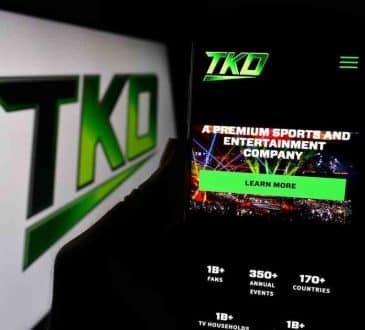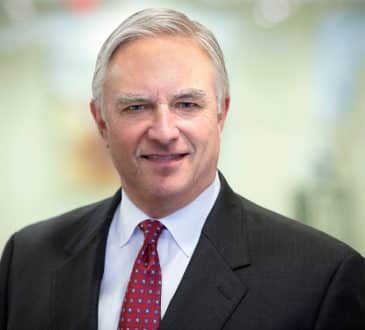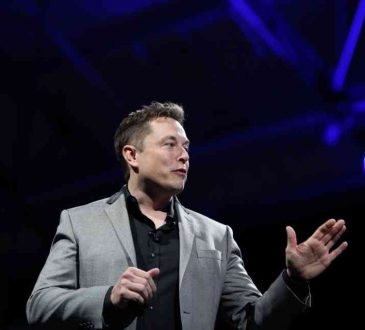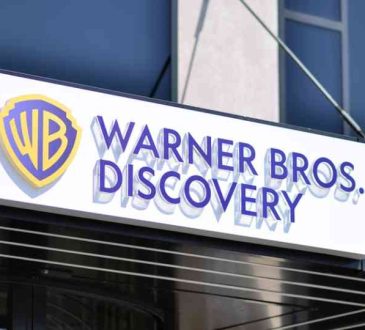The Baby Boomer retirement wave is coming. How do you prepare your high-potential Millennials to succeed?

Companies have worried for years about how their workforces will be affected when Baby Boomers — the second-largest age cohort after Millennials — retire in the coming years. The best way to prepare for this “gray tsunami” involves a fundamental shift in how you approach career pipelines.
As if COVID-19 hadn’t thrown businesses for enough of a loop, there’s another crisis to contend with: the coming retirement wave. Even before the pandemic, the impending workforce exodus of Baby Boomers caused concern. The entire Boomer generation will be 65 or older by 2030, but it won’t take 10 years for them to start retiring. In fact, half of U.S. workers surveyed retired before they expected to.
COVID-19 will likely accelerate these numbers further as older workers opt for retirement over adjusting to hybrid work environments. As this happens, companies large and small will have to confront massive knowledge gaps between veteran employees and the next generation of workers and leaders. It’s imperative that companies identify high-potential junior- and mid-level employees now so they can ensure that the knowledge and experience accumulated by more senior workers isn’t lost later.
I’ve found that companies spend more time and money identifying high potentials than ever before — and for good reason. The average CEO is 58 years old, and many will retire sooner rather than later. Younger workers can bring fresh ideas, but they lack the depth of experience and business knowledge of older colleagues. Here’s how your company can prepare for that coming generational shift.
- Identify Future Leaders Using Performance as Table Stakes
Performance isn’t the same as potential. Consider a high-performing software engineer. Is what makes him great in his current job related to what might make him a great team lead? Sure, he might have the expertise to help team members with a complex coding issue. But is that what you want from a team lead?
Instead, think of performance as table stakes for identifying potential. Start by identifying star performers using processes such as panel talent reviews and other performance-related factors. And then go much deeper. - Define What Potential Really Means
Before we can objectively assess potential, it’s critical to define it. Ask yourself: “Potential for what?” Does the individual have the potential for a leadership role? A senior-level technical position? Potential shouldn’t be nebulous or defined by abstract concepts (think learning agility).
Without an understanding of the specific role someone will inhabit, you’re missing the complexities of a new job requiring different capabilities and behaviors, a wider perspective across the enterprise, or even an appetite for more responsibility. Start by identifying the job or level you’re considering someone for. Then, assess that person’s potential to perform effectively in that job. - Use Objective Data to Identify Potential
Five factors determine potential: aspiration for a senior role, self-awareness, business acumen, people acumen, and the “X-factor” — an organization-specific factor referring to success within an organization’s culture and the ability to execute its strategy. When assessing early career potential, we also look at cognitive ability.
Here, it’s critical to use a custom simulation encompassing a variety of challenges that reflect the potential role. That could mean a simulation one or two levels up or in a different function or business unit. This will show business and people acumen within the context of the organization’s culture and strategy, which helps you assess the X-factor. Add interviews and psychometrics to uncover self-awareness, aspiration, and cognitive ability. - Choose Candidates With Your Company’s Needs in Mind
Before fast-tracking workers into leadership roles, consider the older employees who are likely to retire within the next several years. What gaps will their departures create? How does their current position need to be reconfigured for the company’s future agility? How can you capture some of the institutional knowledge they’ll leave behind?
When you understand the roles you’ll need to fill, you can look at high-potential junior and mid-level employees in light of who will excel there. You might have a highly adept sales team member who’s eager to advance, but her skills and aptitudes don’t align with your imminent needs. In that case, you can work with her to formulate a fulfilling path within the company, but you won’t push her into a position for which she’s ill-suited. - Create Training and Development Programs for Different Cohorts
After identifying strengths and gaps among your high-potential people, you should have a strong set of early-career employees who are still exploring their potential career pathways. You’ll also have more advanced individuals representing your next leadership team.
It’s time to accelerate their development. You might learn from assessments that your leadership bench lacks the executive communication skills that inspire internally and effectively communicate externally. Although that might be a bench-wide need, perhaps some individuals need help with their people leadership skills, while others need a better understanding of leading the business across the enterprise. This is your chance to design custom learning journeys that address thematic gaps while still being tailored to individual needs.
Among the younger high potentials, you might want to emphasize more general skills development and create broader opportunities for cultivating strategic and interpersonal abilities. Remember: They’re still refining their career paths and exploring the areas where they’re effective and engaged, so mentors could be helpful.
Your junior employees won’t be ready to take on executive positions by the time your Boomer leaders retire, but mid-level team members have to be. You’re not just thinking about the next few years. Instead, you want to build a dynamic company that’s prepared to thrive for decades — so you need to identify and develop your next two generations of leaders today.
Add CEOWORLD magazine to your Google News feed.
Follow CEOWORLD magazine headlines on: Google News, LinkedIn, Twitter, and Facebook.
This report/news/ranking/statistics has been prepared only for general guidance on matters of interest and does not constitute professional advice. You should not act upon the information contained in this publication without obtaining specific professional advice. No representation or warranty (express or implied) is given as to the accuracy or completeness of the information contained in this publication, and, to the extent permitted by law, CEOWORLD magazine does not accept or assume any liability, responsibility or duty of care for any consequences of you or anyone else acting, or refraining to act, in reliance on the information contained in this publication or for any decision based on it.
Copyright 2024 The CEOWORLD magazine. All rights reserved. This material (and any extract from it) must not be copied, redistributed or placed on any website, without CEOWORLD magazine' prior written consent. For media queries, please contact: info@ceoworld.biz
SUBSCRIBE NEWSLETTER








